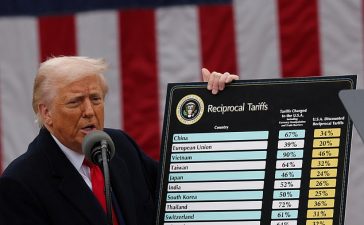Keir Starmer this week announced a 50-point plan that aims to give the UK world leader status in artificial intelligence and grow the economy by as much as £47bn a year over a decade.
The multibillion-pound investment, which seeks to create a 20-fold increase in the amount of AI computing power under public control by 2030, has been framed as a gamechanger for businesses and public organisations.
The reaction to the announcement has been mixed, given it is far from clear that the much-hyped potential of AI will result in the level of economic benefit forecast. Many are concerned that the technology could lead to widespread job cuts, while others fear a destruction in the value and growth of the creative industries after learning of proposals to make it easier for AI companies to mine artistic works for data, for no cost.
Despite such concerns, for many in the world of business the AI revolution is already here and transforming their industries. So how are they deploying the technology to improve productivity and where do they hope it could make further gains in the future?
Aviation
Airlines are increasingly turning to AI for the complex logistics of managing large fleets and thousands of crew in unpredictable skies. AI is used across Ryanair’s operations to optimise revenues, schedules and “tail allocation”, or picking the best aircraft for each flight; BA also uses it at Heathrow to help pick gates according to the numbers of transfer passengers on an incoming plane.
EasyJet said it had embedded AI across its new Luton control room and its predictive technology now refines stock levels on planes and redesigns maintenance regimes to pre-empt faults. Meanwhile, the budget carrier’s Jetstream tool aids the brain-twisting task of swiftly reallocating crew and planes with maximum efficiency and the least disruption when problems occur. Gwyn Topham
Energy
One worry raised over Starmer’s AI expansion plan is that the hugely energy-hungry datacentres required to run its programs could exceed the UK’s grid capacity. However, others argue that the tech could actually speed up the clean power revolution by solving the problem of how to run the energy systems of the future.
Power grids increasingly have to adapt to the real-time fluctuations of thousands of renewable energy sources and account for new technologies such as electric car batteries that can draw power from the grid but also release it back when needed.
Google was one of the early adopters of a digital-energy approach. Its AI subsidiary DeepMind developed a neural network in 2019 to increase the accuracy of power output forecasts for its renewables fleet. By predicting generation and demand with greater accuracy it has been able to balance its consumption and even sell some electricity back to the grid. Google says this has increased the financial value of its wind power by 20%.
Meanwhile, in the UK, the energy supplier Octopus Energy uses the advanced data and machine learning capabilities of its Kraken operating system to allow its customers to access electricity when it is cheaper and greener through its time-of-use tariffs. Using power at off-peak times means it can often be 40% cheaper, and cut the need for investment in new fossil fuels or costly grid expansion projects. Jillian Ambrose
Starmer’s plan proposes overhauling the UK’s legislation so AI models can scrape intellectual property from the internet for training, provided they give copyright holders the ability to opt out of the process. The creative industries have raised grave concerns that this would threaten the livelihoods of professionals across the sector.
However, elsewhere in the sector, media businesses are signing licensing deals with the big AI developers or embracing the technology to make the most of their own – and clients’ – content.
The advertising giant WPP is investing £250m annually in data and AI and has run a string of marketing campaigns using the tech, including creating a “Jen AI” that allowed users to invite friends on a Virgin Voyages cruise with a personalised message from the pop star and actor Jennifer Lopez. And for Euro 2024, Mars’ brand Snickers used an AI imitation of the football manger José Mourinho to allow users to send a customised message to friends.
In the music industry, Sony has worked with Pink Floyd’s David Gilmour to allow fans to remix music and artwork of a classic album, while Warner Music used AI to enable the country music star Randy Travis, who lost his ability to sing after a stroke, to release new albums.
And in film, machine-learning and “directed” AI has been driving improvements in the special effects industry, and helping studios to decide who to market their movies to and even attempt predicting the commercial success of a film based on a script. Mark Sweney
Pharmaceuticals
Large drugmakers and small AI-specialised biotech companies are using the technology to speed up drug development and reduce costs and failure rates. Medicines usually take at least a decade to develop, and 90% of drugs that go into clinical trials on volunteers fail.
AI is helping them design smarter clinical trials by selecting patients who are most likely to respond to treatment. A recent analysis by Boston Consulting Group showed that, since 2015, 75 AI-generated drugs have gone into clinical trials, of which 67 were still being trialled last year.
A treatment for a deadly lung disease called idiopathic pulmonary fibrosis has been hailed as the world’s first fully AI-generated drug that is in late-stage trials. Developed by the Massachusetts-based company Insilico Medicine, it used AI to generate 30,000 novel small molecules and whittled this down to the six most promising drugs, and then a lead candidate. Meanwhile, AstraZeneca, Britain’s biggest drugmaker, said more than 85% of its small molecule drug pipeline is “AI-assisted”.
Ministers are considering opening up the NHS database to private companies, allowing them to use anonymised patient data to develop new drugs and diagnostic tools. However, privacy campaigners are opposed to such a move, as even anonymised data can be manipulated to identify a patient. Julia Kollewe
Retail
Retailers haven’t been able to stop talking about the rise of AI in their work in the past six months, as they hunt for ways to become more efficient amid surging labour costs. Sainsbury’s, for example, is using AI-enabled forecasting tools to help it put the right amount of products on shelves in different stores as part of a £1bn cost-saving initiative. Marks & Spencer is using AI to write online product descriptions and help advise shoppers on outfit choices based on their body shape and style preferences, as part of efforts to increase online sales.
Tesco’s chief executive, Ken Murphy, said AI was already being widely used in making buying decisions, adding that the technology was at a level where interactions with customers would be “truly powered and driven by AI in almost every facet of the business”. He suggested it could be used to analyse shoppers’ loyalty card data and give them “inspiration and ideas that are relevant to them and their family”, including how to save money or look after their health by buying – or not overbuying – certain items. Sarah Butler
Call centres
Productivity and service levels could be transformed in the public sector by AI-enhanced efficiencies that automate the simplest tasks for call handlers, argues Adolfo Hernandez, the chief executive of outsourcing group Capita.
For example, pulling up past interactions with customers saves going over old ground. Programs can stitch together council services in the background, so that the planning application department and the building services are aligned. Or by listening in the background to transcribe and summarise calls, reducing time spent writing up notes.
Capita has introduced its “Agent Suite” product with two clients. Early indications, it says, show a 20% reduction in average call handling time, a 25% reduction in post-call administration and 15-30% increase in calls that are resolved at the first interaction. Nils Pratley










